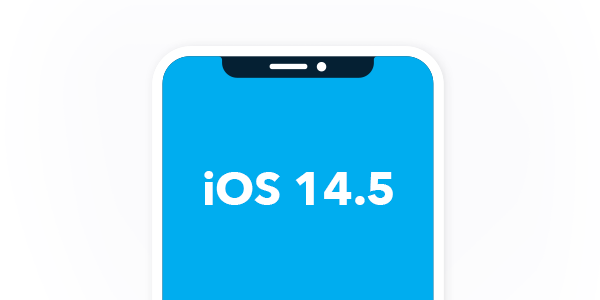
The release of the Apple 14.5 iOS has been one of the hottest topics for performance marketers all over the world as it was poised to induce unprecedented changes, regarding audience building, tracking and reporting. But before we get into that, I think we should go over what this release is about and what is the size of the market that is actually impacted.
What is this new iOS changing?
The iOS 14 release notes were mostly revolving around the opting out of IDFA (identifier for advertisers) by default. Mobile devices do not use cookies to track users’ behavior the way web browsers do, instead they use IDFA. These identifiers are just random numbers assigned to a device. User behavior signals are gathered and associated with these numbers and that is how advertisers can target users down the line.
What is the size of the impacted market?
- Only mobile devices are impacted, desktop browsing will not be impacted.
- iOS are operating systems for Apple products, non Apple phones or tablets will not be impacted.
- Globally, almost 20% of Apple products users opt back in the usage of IDFA, only 10% in the United States however.
Knowing the above you can orient your advertising efforts towards tactics and approaches that would be more or less impacted by that new iOS. Outside of the US and Japan, the vast majority of mobile phones and tablets are operated by Android (Canada is 50-50). The Global OS usage ratio is largely in favor of Android, as just about 87% of all mobile devices are operated by Android.
Overall, mobile device traffic has already surpassed desktop traffic a few years ago, but some industries are still getting most of their traffic inventory from desktop.
In other words your geotargeting and industry will play a crucial role in how the new iOS release will impact your ad campaigns. If you are buying B2C traffic for a low entry price retail product on Facebook in the US or Japan, you will be highly impacted. If you are buying B2B traffic in India, chances are you will not feel the change.
Now that we have a better idea of what this iOS update is about, let’s see how it impacts the various parts of your media funnel.
Let’s just split the funnel in two parts for the sake of this demonstration:
Programmatic and Social on one end, and Search on the other.
This change can potentially impact 2 major aspects of your ad campaigns across these two parts of the funnel:
Tracking
Targeting
And this where the split of the funnel in only two categories makes sense.
Targeting:
For your campaigns to be efficient on the programmatic and social end you need very strong user data to build the right types of audience and targeting buckets. The removal of IDFA will simply prevent you from doing so. Your audience sizes will plummet and so will your traffic volume. While there are solid solutions to try and mitigate tracking issues, there are no foolproof ways to mitigate the targeting issues. Lookalike audiences are a way to keep your overall level of exposure, but the quality of the traffic usually goes down quite a bit.
On the search end however, the targeting is simpler, you want to buy traffic for some terms, users are looking for these same terms, and that is how the matching is taking place.
This rationale doesn’t apply to any display, discovery or youtube type of campaigns in your Google Ads interface.
That is essentially why Facebook, Instagram and programmatic are a lot more impacted by the new iOS 14 than Search products are.
Tracking:
For tracking, the solution is a little more upfront, the most technically inclined marketers out there have already opted for server side tracking. Google Tag Manager has even released server side tracking features in a public beta earlier this year.
The pros are alluring, by going server side rather than client side you will no longer rely on 3rd party script potentially slowing down your page loads, overall site performance will be smoother, and your data will be allegedly more secure.
The main issue is the integration, which will require more dev work than most advertisers are comfortable with or staffed for.
Some API solutions exist too, these are easier to implement.
Advertisers are not equal in front of the new challenges the iOS 14 release is bringing along, but understanding the very nature of the issue is a good start to try and mitigate it.
For those of you who are eager to learn more about the various other ways to maintain the performance of your ad campaigns in Facebook, instagram or Google Ads amidst this major change, Huddle Fifty is ready to work with you to build the ideal custom solution for your business. Contact us today to book your Free consultation.